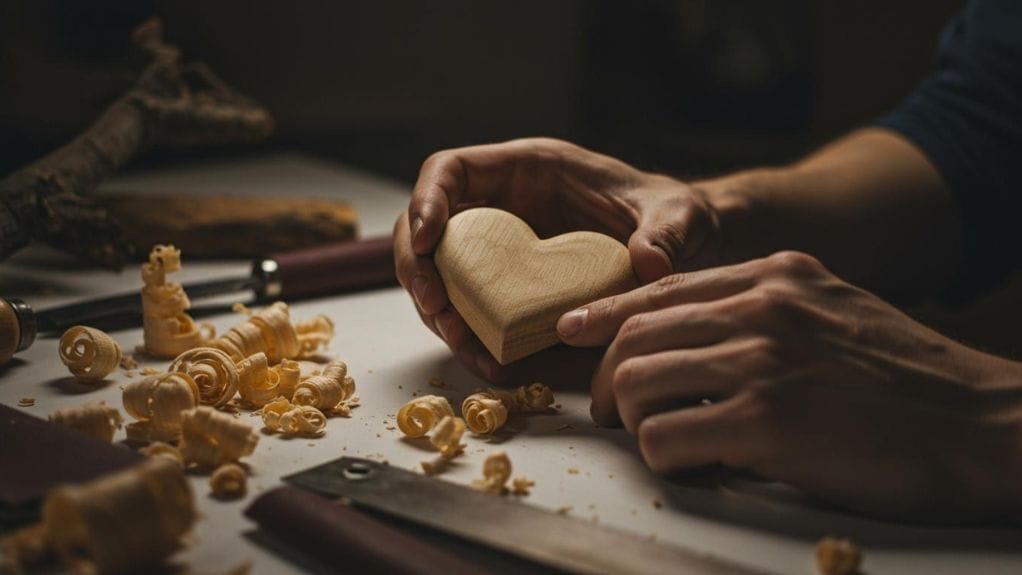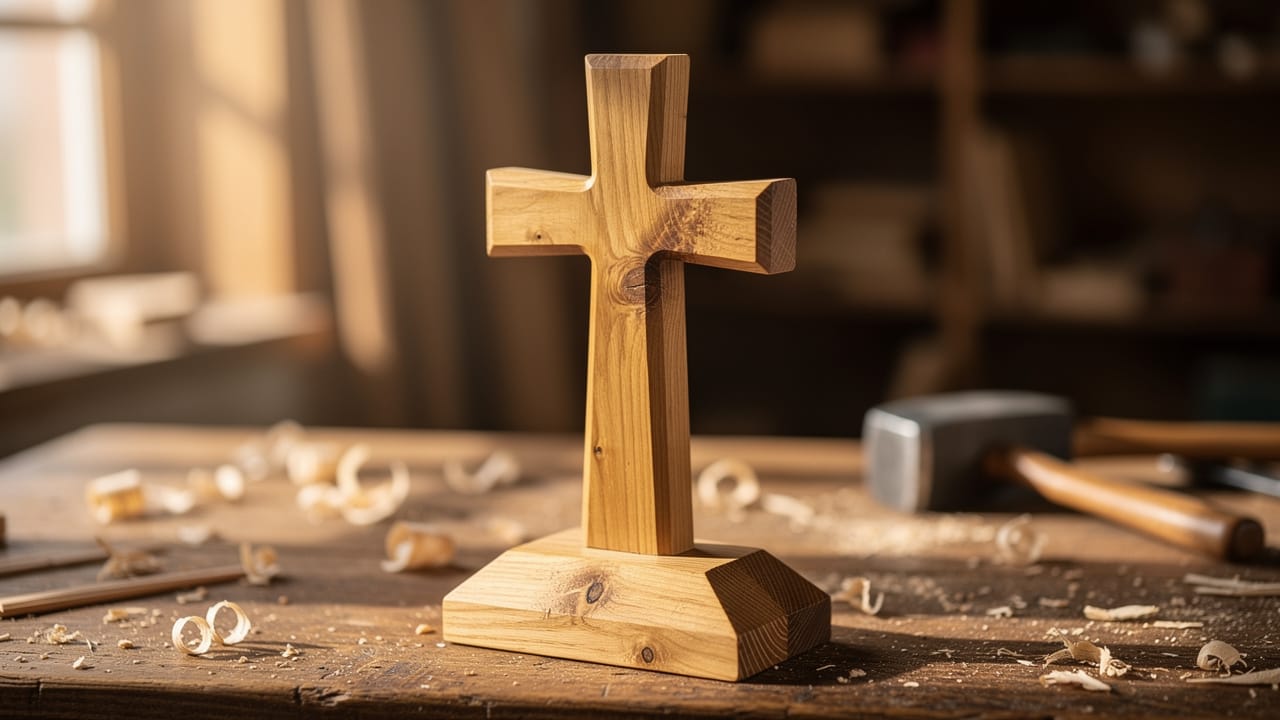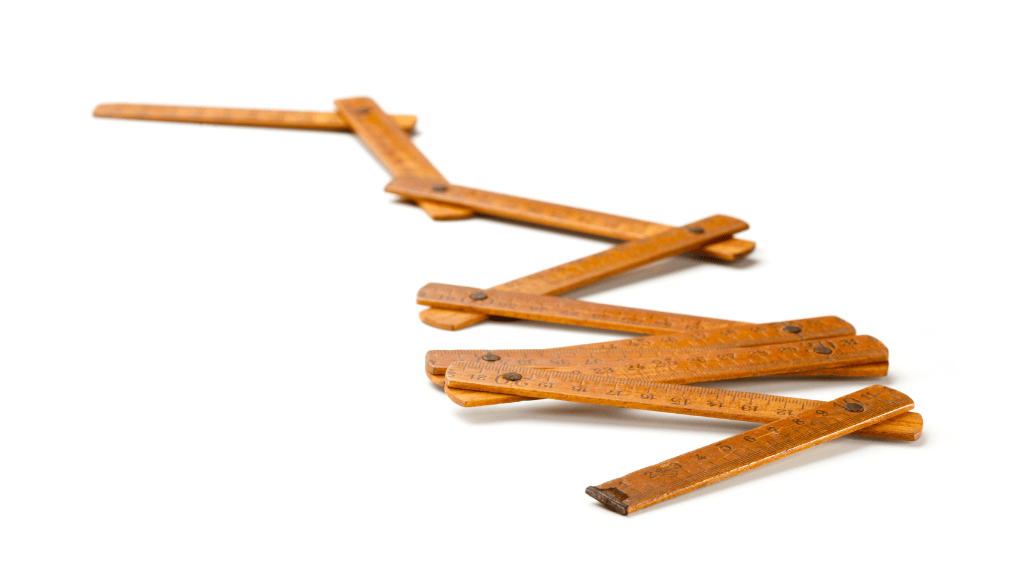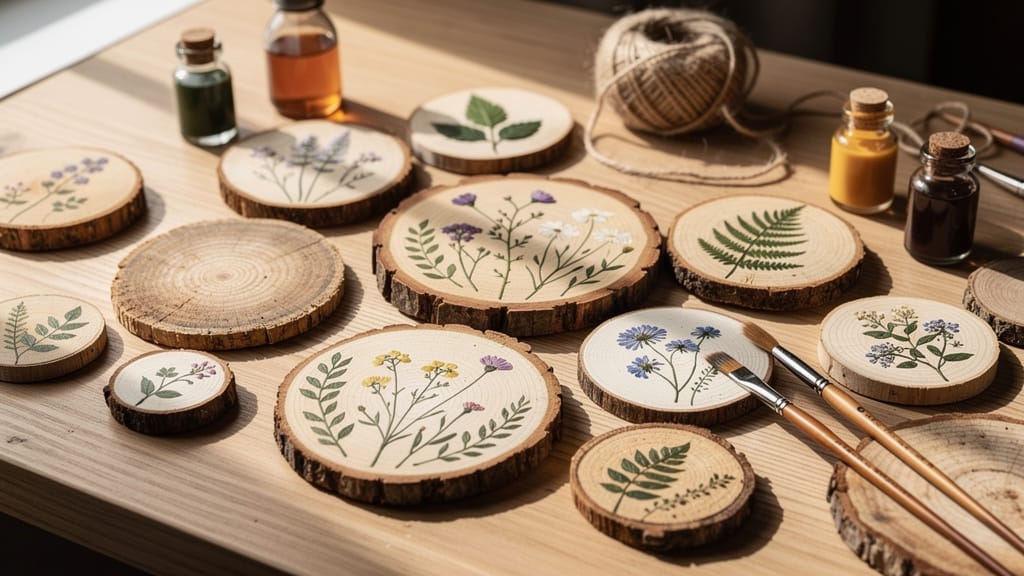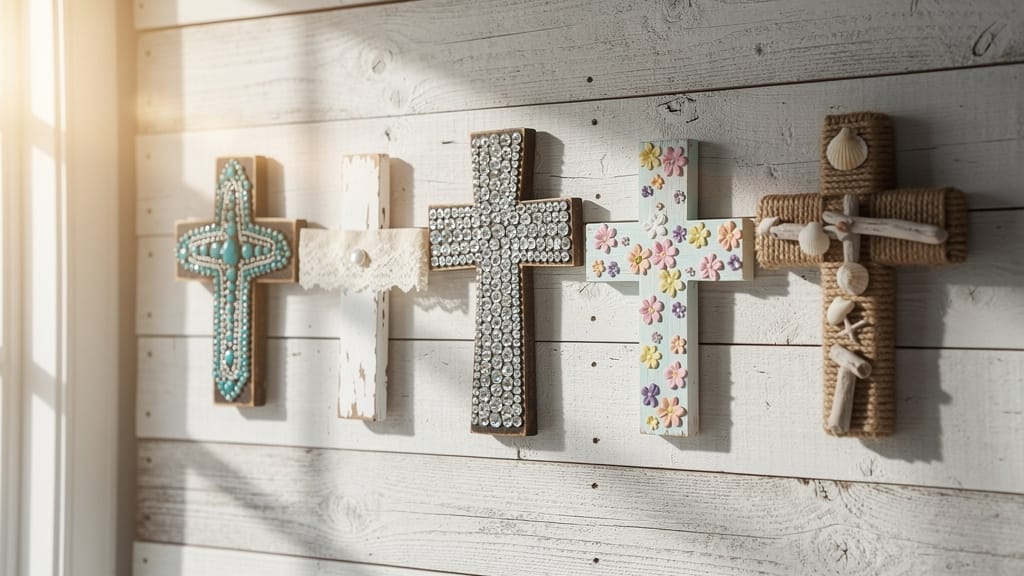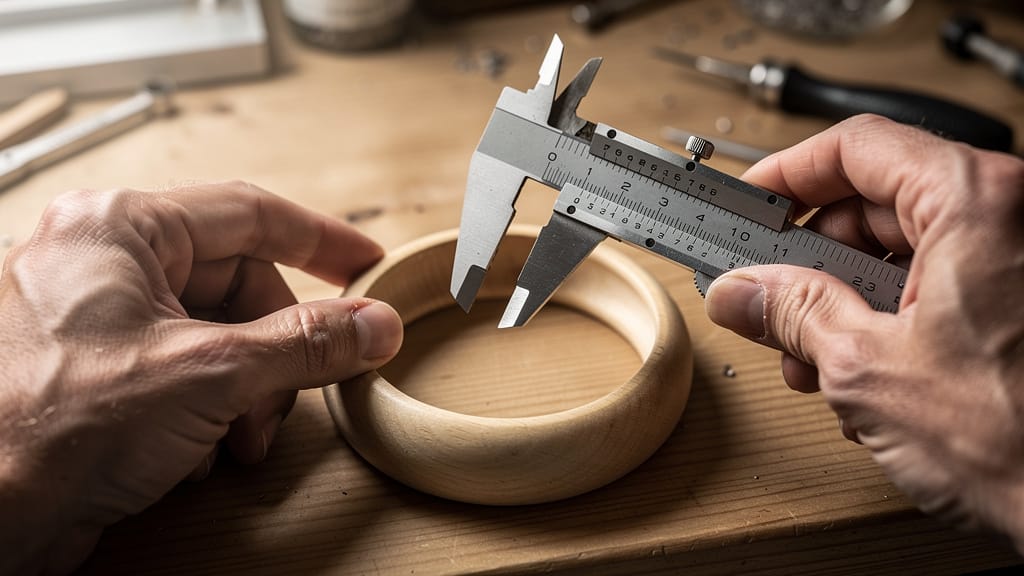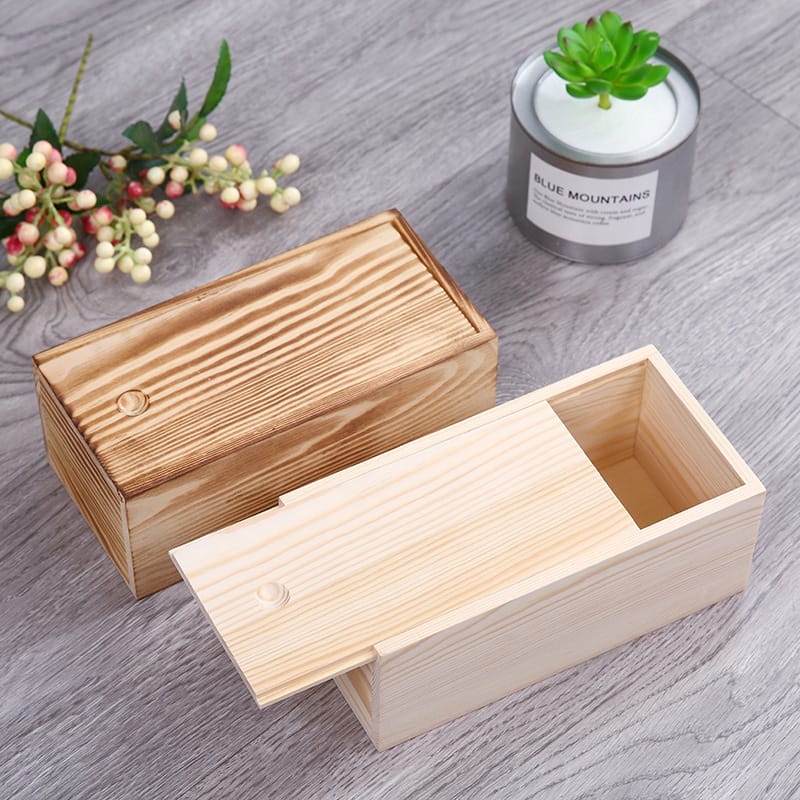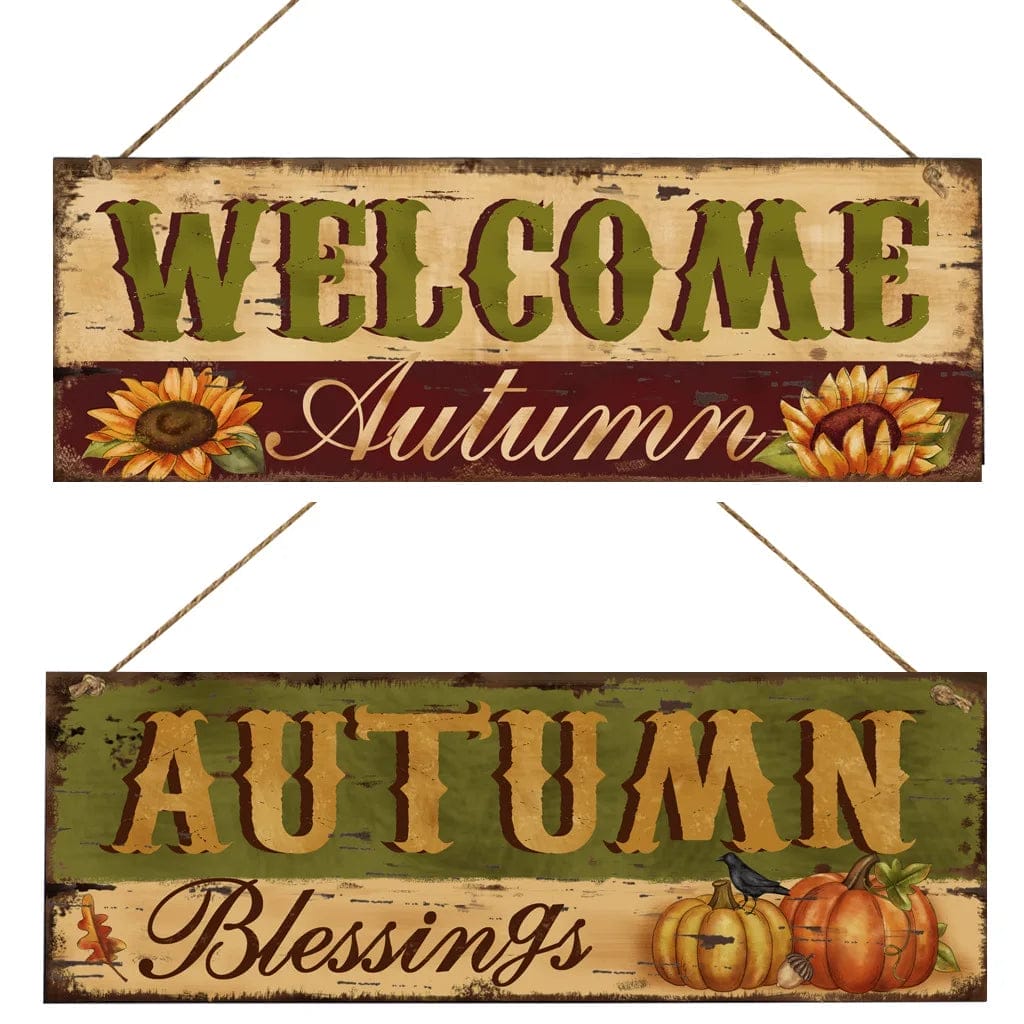We’ll find a range of wood craft materials suitable for various projects, from solid hardwoods like maple and oak to engineered options such as plywood and MDF. Key properties include moisture content (6-8% ideal), grain pattern consistency, and surface finish quality.
We offer customization with precise tolerances (±0.005 inch) and multiple finishing options, including water-based coatings and oil stains. Understanding these material specifics will guarantee ideal selection for your unique project requirements.
Key Takeaways
- Popular woodcraft materials include hardwoods like oak and maple, softwoods like pine, and engineered options like plywood and MDF.
- Surface finishes range from water-based to oil-based stains, with clear sealants protecting against moisture and wear.
- Wood materials require specific moisture content (6-8%) and proper storage to prevent warping and dimensional changes.
- Customization options include various dimensions, surface preparations from 120-grit to 400-grit, and different edge treatment profiles.
- Quality control involves checking for grain consistency, proper thickness, smooth surfaces, and absence of defects before crafting.
Common Types of Wood Materials Used in Crafts

Let’s examine the diverse range of wood materials available for crafting, from traditional solid hardwoods to modern engineered options.
Solid Hardwoods
The versatile world of solid hardwoods encompasses several premium species that craftspeople regularly employ, including oak, maple, walnut, cherry, and birch.
When selecting wood craft supplies, we’ll find that oak’s remarkable strength and distinctive grain patterns make it ideal for furniture projects. Maple’s fine texture and wear resistance excel in functional items like cutting boards, while walnut’s deep tones create sophisticated decorative pieces.
We particularly value cherry for its aging characteristics. It develops richer coloring over time. Each species offers unique properties that enhance our crafting possibilities.
Softwoods
Softwoods provide distinct advantages that make them indispensable in wood crafting.
Pine leads the pack as the most accessible and versatile softwoo. It’s perfect for shelves and decorative pieces.
Cedar’s natural resistance to decay makes it our top choice for outdoor projects. But it comes at a higher price point.
When we work with softwoods in our craft projects, we benefit from their lower density, which enables easier cutting and faster drying.
Their varied grain patterns and colors give us extensive design possibilities across our woodworking endeavors.
Engineered Woods
Modern engineered woods offer crafters significant advantages over traditional lumber through their specialized manufacturing processes and enhanced material properties.
When selecting craft supplies, we’ll find plywood’s layered construction provides exceptional strength for furniture and decorative pieces, while remaining lightweight.
MDF’s compressed fiber composition delivers smooth surfaces ideal for detailed carvings and painted projects. For outdoor crafting, OSB’s weather-resistant properties make it our go-to choice.
These engineered options give us cost-effective alternatives to solid wood. Each type offers unique characteristics for specific applications. Their stability and resistance to warping guarantee reliable results across diverse craft projects.
Veneers and Laminated Surfaces
Veneers and laminated surfaces offer crafters precise control over aesthetics and durability in their projects.
We can utilize veneers less than 3mm thick, crafted from premium woods like oak, walnut, cherry, and maple, to achieve stunning visual effects through their distinctive grain patterns and colors.
Laminated surfaces are constructed by bonding multiple material layers. They provide enhanced structural stability and moisture resistance.
When we combine these characteristics with straightforward adhesive application methods, we can create lasting craft pieces, from decorative boxes to wall art, that maintain their integrity while showcasing the beauty of fine woodworking.
Reclaimed and Recycled Wood
Reclaimed and recycled wood materials have revolutionized the craft industry. They offer distinctive characteristics that new lumber simply can’t match.
We’ll often find these materials sourced from old barns, buildings, and furniture, with oak, pine, and cedar being the most sought-after varieties.
When we work with reclaimed wood, we’re accessing unique grain patterns, natural imperfections, and weathered textures that tell a story.
Beyond their aesthetic appeal, these materials offer cost-effective and environmentally conscious alternatives to new lumber.
Their durability and character make them ideal for furniture construction, decorative pieces, and artistic installations.
Material Properties That Matter to B2B Buyers

Professional B2B buyers in the wood crafting industry evaluate several critical material properties before making purchasing decisions. For wood craft kits and materials, we’ve identified these essential characteristics that influence quality and marketability:
- Hardness and durability metrics, particularly in oak and maple selections, ensuring long-term product stability.
- Grain pattern consistency and surface finish quality that enhance aesthetic appeal.
- Moisture content maintained between 6-8% to prevent dimensional changes.
- Sustainability certifications and ethical sourcing documentation.
These properties directly impact product performance, end-user satisfaction, and overall market competitiveness.
Customization Options in Our Company

We’ll need to take into account key customization variables, including precise dimensional specifications, surface preparation options, and edge treatments.
We can select from multiple branding approaches, such as laser etching, hot stamping, or direct UV printing, to incorporate permanent markings and logos.
Dimensions and Tolerances
Wood craft materials offer precise dimensional specifications and customization options to meet diverse requirements.
Standardized dimensions like 12 x 19 inches and 10.5 x 13 inches in plywood and plaques, ensuring consistency across projects. Material thickness typically ranges from 1/8 inch upward, accommodating various design needs.
We maintain tight tolerances of +/- 1/16 inch for most wood products. This accounts for natural material characteristics.
Small cutouts and shapes come in standard sizes for seasonal decorations and educational projects.
Whether choosing unfinished or pre-finished surfaces, we can select materials that align with specific dimensional requirements.
Surface Finish Choices
Selecting the right surface finish dramatically impacts both the aesthetic appeal and longevity of woodcraft projects.
We’ll find water-based options offer excellent quality for indoor applications, providing eco-friendly solutions with minimal odor.
For those seeking to enhance natural wood characteristics, oil-based stains deliver deep penetration and rich warmth.
We can protect our finished pieces with clear sealants like polyurethane or varnish. They ensure durability against moisture and wear.
When considering surface finish choices, rub-on and wipe-on applications present user-friendly alternatives that maintain professional results. Each option serves specific purposes in our crafting arsenal.
Edge Treatments and Joinery Options
Craftsmen seeking professional-grade results must consider both edge treatments and joinery options as critical elements of woodworking customization.
We’ll enhance durability through chamfering, rounding, or beveling edges, preventing splintering while creating aesthetically pleasing finishes. For structural integrity, we recommend selecting appropriate joinery techniques like dovetail, mortise and tenon, or box joints.
These customization choices greatly impact both form and function. High-end projects benefit from decorative joints that showcase expert craftsmanship, while precise edge treatments guarantee longevity.
We can reference supplier-provided diagrams and technical guides to execute these specialized techniques effectively, making sure our projects meet exacting standards.
Branding and Labeling
Personalized branding and labeling transform basic wood materials into distinctive creations.
We’ll find numerous options for adding custom elements, from engraved logos on promotional items to painted designs on seasonal decorations. We can utilize unfinished wooden surfaces as blank canvases for applying labels, stickers, or decals.
For effective branding implementation, we’ll need to evaluate the specific requirements of each project.
Whether we’re creating personalized plaques, branded coasters, or customized gift items, detailed project plans help us determine ideal placement and technique for incorporating names, designs, and identifiers into our woodworking projects.
Finishing, Treatments, and Longevity

When selecting wood finishes, we need to weigh the distinct advantages of stains against paints. We’ll also consider lacquers and oils that provide varying degrees of protection and aesthetic appeal.
Stains, Paints, Lacquers, and Oils
Although each wood finishing method offers distinct advantages, understanding the commercial pros and cons is essential for selecting the best treatment.
We’ll help you navigate these options.
- Stains showcase wood grain while adding color, but often need multiple coats and sealing.
- Paints offer an unlimited range of color choices and can hide flaws. But they conceal natural grain patterns.
- Lacquers provide quick-drying, durable protection. But they require careful ventilation during application.
- Oils penetrate deeply, enhancing grain and imparting a natural beauty, yet they require longer drying times and regular maintenance.
Consider these characteristics in conjunction with your project’s specific requirements when making your selection.
Protective Coatings for High-Wear Applications
The selection of protective coatings for high-wear applications builds directly on our understanding of basic wood finishes.
We’ll need to focus on durable options like polyurethane and specialized varnishes. They create robust barriers against moisture, chemicals, and UV damage.
These protective coatings come in oil-based, water-based, and shellac formulations. Each has distinct advantages for specific uses.
To maximize longevity, we must consider regular maintenance and reapplication schedules.
Anti-Warping Treatments and Kiln Drying
Maintaining dimensional stability in wood requires a thorough approach that combines kiln drying with specialized anti-warping treatments.
When working with unfinished wood for craft projects, we can achieve ideal results by selecting materials that have undergone proper kiln drying to a moisture content of 6-8%. This controlled process greatly reduces the risk of future deformation.
We can further enhance stability by applying anti-warping chemicals. They provide additional protection against environmental stresses.
Together, these methods create a reliable foundation for our woodworking projects. They ensure both structural integrity and lasting beauty in finished pieces.
Quality Control Checklist for Wood Craft Materials

Successful wood crafting projects depend heavily on implementing rigorous quality control measures for materials. We recommend creating an all-encompassing checklist that addresses key inspection points.
Let’s examine the wood’s surface. Inspect for any raised bead patterns, grain consistency, and potential defects, such as knots, that could compromise the final product.
When sourcing materials, we must verify proper thickness specifications, particularly for plywood variants.
Confirm all surfaces are splinter-free and smooth to the touch. Always confirm accurate dimensions and product descriptions before purchase, as precision is crucial for project success.
Conclusion
We’ve examined the essential specifications for wood craft materials, from carefully selected woods to their distinct mechanical properties. Through our customization options, we’ve established critical benchmarks for B2B material selection.
By implementing these technical standards and specifications, we’ll guarantee peak material performance and product longevity in craft manufacturing applications.
Shop our extensive wood craft collections and experience handcrafted quality—contact us anytime for custom orders or wholesale inquiries.
FAQs
What Type of Wood Is Used for Crafts?
| Wood Type | Common Use |
|---|---|
| Pine | Beginner projects |
| Birch plywood | Precise work |
| MDF | Affordable decorative items |
| Balsa | Lightweight models |
| Walnut | Premium hardwoods |
| Cherry | Premium hardwoods |
What Are the Different Types of Wood Crafts?
We craft decorative signs, furniture pieces, turned bowls, cutting boards, unfinished wood cutouts, jewelry boxes, wall art, custom frames, children’s toys, planters, and seasonal holiday decorations from wood.












